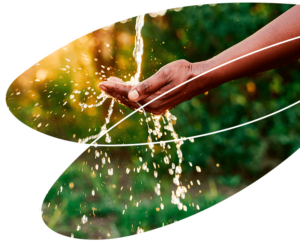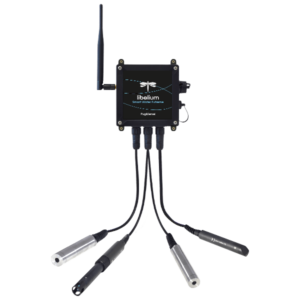Smart Water Management
IOT Solutions
Water Management Affects Multiple Sectors: Agriculture, Livestock, Industry, Services, Cities, etc.
- Monitoring of potable water, detection of chemical product leaks in rivers, real-time control of leaks in the sea, monitoring of pressure variations along pipes, and control of water quality in shrimp and tilapia pools, among others.
- The growth of the population and climate change are the main challenges for water, a scarce resource.

IoT Solution for Water Management

Global Water Usage Distribution:
- 70% Agriculture: directly affects underground water resources
- 20% Industry
- 10% Domestic Use
Where to Monitor Water Quality?
- Surface Waters: rivers, lakes, transitional waters, and coastal waters
- Underground Water
Ecological Control Needs:
- Biological Indicators
- Hydrological Indicators
- Physicochemical Indicators
Parameters to Monitor According to Laws:
- Suspended Solids
- BOD and COD
- Ammonia, Nitrates, and Phosphorus
- Conductivity
- pH Level
Benefits of IoT Technology for Water Management
- Reduction of up to 10% in per capita water consumption
- Reduced Billing
- Reduced Costs:
- Maintenance Costs
- Emergency Repairs
- Energy Costs
- Reduction of Leaks: up to 20% reduction in waste
- Recovered Income
- Coordination and Synergies among Stakeholders
- Predicting Potential Failures
- Managing Pressure and Consumption
Features
- Different models for different needs: Standard, Advanced
- High-Precision Sensors
- Real-Time Information and Continuous Monitoring
- Sensors can be placed in a buoy (installation in sea, lakes, production pools)
- Functions with Solar Panel
- Easy installation
- Long-Lasting Battery
- Interoperability with any wireless technology
- Predictive and Preventive Models can Be Built
Physical characteristics:
- Minimum maintenance costs
- IP65 Box / IP68 Sensors
- Weather-Resistant Box / Waterproof Sensors (up to 5 bar -50 meters)
- Easy to Implement
Parameters to Measure
- Smart Water is a product designed to detect the most relevant parameters related to water quality control such as dissolved oxygen, oxidation-reduction potential (ORP), pH, conductivity, and temperature.
- Dissolved oxygen, pH level, oxidation-reduction potential (ORP), conductivity, salinity, TDS - Kcl (total dissolved solids), temperature, nephelometric turbidity, suspended solids, sludge blanket.
- Selective ion probes: ammonium, nitrate, chloride, sodium, and calcium.
- Biochemical and Organic Level Sensors: Fluorometers for Chlorophyll, Phycoerythrin (Freshwater BGA), Phycoerythrin (Marine BGA), CDOM / fDOM (Colored Dissolved Organic Matter / Fluorescent Dissolved Organic Matter)

